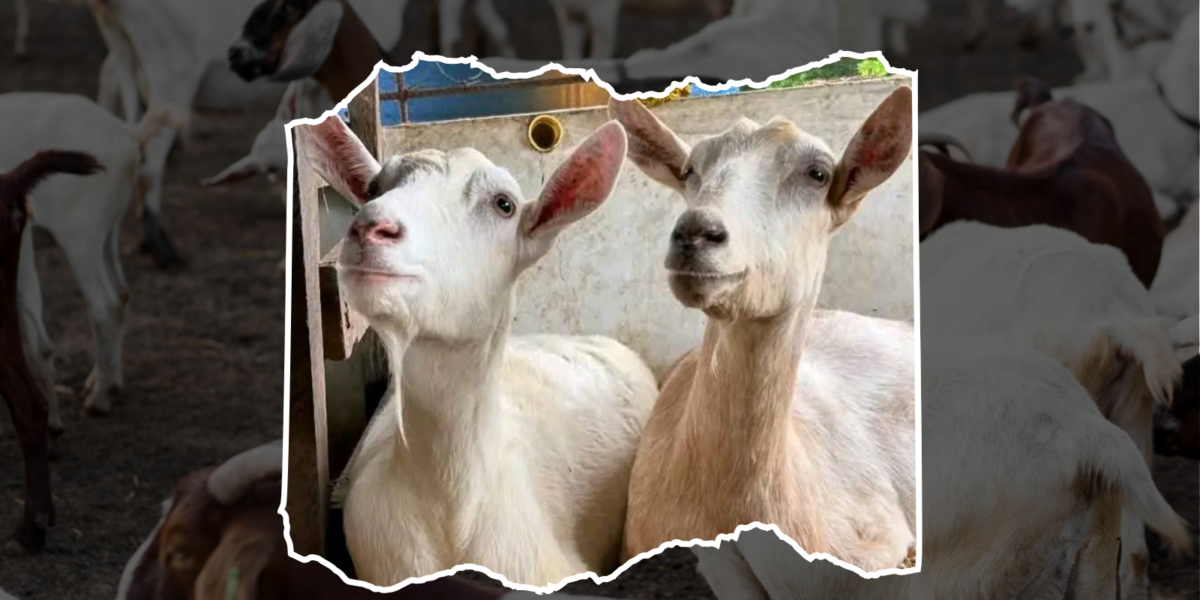Goat farming is among the most popular but underutilized treasures in agriculture and farming in general. Ever thought of venturing into such a lucrative venture either as a diversification of your farming or just a new venture? Below is a guide to the step-by-step rearing of goats in Kenya.
Key Considerations When Engaging in Goat Farming in Kenya
- Market research – Before you start a goat farming project, do a little research to know who your market will be and how to access that market with ease to avoid inconveniences.
- Mode of production – Choose whether you are going to keep a goat for milk, meat or both.
- Scale of production – Let your input dictate your scale of production whether large scale or small scale.
- Business plan – As they say, failure to plan is planning to fail. Be sure to get a business plan for your goat farming venture beforehand.
Site Selection
The choice of the area where you are going to rear your goats is as critical as the venture itself, consider the following factors:
- Accessibility – your site should be accessible i.e. proximal to a good road system for easier mobility.
- Closeness to water source – the site must have fresh water to be used by the goats.
- Security – Your area of choice should be secure from theft or wild predatory animals. Fencing should be done to reinforce security.
The best regions where large scale goat farming does well are among others (Kisaju) Kajiado Mogotio Baringo, Marigat parts of Ukambani, market and parts of coasts.
Note: For dairy goat farming, one might benefit from choosing a location that is near an urban center for quick access to the markets. In that regard, areas like the outskirts of Nairobi, Mombasa, Nakuru, Eldoret, and Kisumu might be prime targets for this kind of farming.
Capital Outlay for a Small Scale Goat Farm
| Item | Estimated cost (KES) |
| Land leasing per year | 15000 |
| Veterinary services | 12000 |
| 5 Goats | 75000 |
| Structure Construction | 60000 |
| Feeds | 40000 |
| Miscellaneous | 10000 |
| Total | 212000 |
Choice of Breed
A key factor to successful goat farming. When choosing your breed, put in consideration factors like their growth rate as they must be fast growing and be able to convert feed into meat or milk. Other factors to consider include adaptability and resistance to pests and diseases. Here is an outline of the most common goat breeds in Kenya.
| Breed | Characteristics | Use |
| Galla | Adaptive to harsh climates, disease resistant, and hardy. | Meat |
| Boer | Rapid growth, and good meat quality, require intensive management, and a masculine body. | Meat |
| Saanen | Has a calm temperament, good milk production, needs intensive feeding. | Milk |
| Alpine | Adaptive, a bit hardy, high milk production. | Milk |
| Small East African goat | Hardy and only adapted to Kenya, resilient and resistant to diseases. | Dual purpose |
Construction of Structure
A safe and comfortable structure is what you need in your farm for your goats to help protect them from harsh weather conditions and predators. Here is what you need to keep in mind while constructing your structure.
- Ventilation – make sure your structure has proper ventilation to ensure air circulation to avoid the build-up of respiratory diseases.
- Security – while constructing your structure do so by fencing it using either chainlink to keep off predators and other intruders. A fence can also help keep them contained as they are known to be very curious.
- Make sure your structure is spacious enough to allow free movement of the goats and resting.
- Raise the structure – construct your structure using wood and ensure it is raised to help prevent the goats from being infected by disease and save space at the same time.
- Sleeping area – the structure should have walls around with doors to allow the goats to move in and outside the area freely.
- Feeding area – fit it with troughs for the feeds and a good enough distance to avoid overcrowding on one trough.
- Watering area – the watering point should have troughs for watering the goats.
The structure should be constructed separately so that the kids (young ones) have a separate pen from the adults.
Common Diseases and Treatment Measures
| Disease | Symptoms | Treatment |
| Contiguous bovine pleuropneumonia | Anorexia, depression, weight loss, dullness, reduced production, nasal discharge, coughing and sometimes sudden death. | Vaccinations, use of tetracycline, and use of antibiotics. |
| Mastitis | Swelling and reddening of the mammary glands, fever, loss of appetite and depression. | Good milking practice, practicing milking hygiene, use of antibiotics and culling of persistent infections. |
| Footrot | Necrotic lesions, lameness, reduced production, loss of appetite, abnormal gait | Aerosol spray, foot fip in formalin and use of antibiotics. |
| Ringworm | Poor growth, crusting and scaling, reddened skin, | Use imidazole spray, and isolate the infected animal to prevent the infection from spreading to other animals. |
| Babesiosis | Lethargy, depression, anorexia and fever, hemoglobinuria, anemia and jaundice. | Control of vector ticks, use of antibiotics, quarantine of susceptible goats, treatment with diminazene aceturate. |
| Anaplasmosis | Anaemia, incoordination, loss of appetite, brown urine, rapid pulse. | Use of antiprozoas, use appropriate acaricide to kill ticks |
| Anthrax | The blood may fail to clot, loss of appetite, sudden death | Proper disposal of animal carcasses by burning and burying the burns deep in the soil. |
| Bloat | The animal stops grazing and becomes reluctant to walk, the left side of the abdomen is distended, straining during urination and defecation. | Relieve the bloat by puncturing a hole in the rumen to remove the trapped air. |
Management
How well you manage your farm will largely determine how successful you become in the long-run. Here are some recommended goat farm management practices.
1. Breeding
Breeding is a major component of any successful goat farm. While breeding, consider breeds that are not only aligned with your goal whether be it meat or milk production. You also need to make sure that whatever breed you choose is adaptive, productive and disease-resistant.
Your breeding program should be in such a way that it coincides with periods of peak food supplies within the farm; mostly during the onset of long rains. That’s when kidding should be done to maximize productivity and overall stability of the farm. That said, one has to be careful to avoid in-breeding by separating the “father goats” from their daughters during mating.
When it comes to cross-breeding, one should be careful and ensure they only cross to a breed that has more advantageous traits.
2. Health
A healthy herd is a wealthy herd. Keep your goats as healthy as possible by ensuring their nutrition is well constituted to ensure optimal yields.
Vaccinate against ailments like the contagious bovine pleuropneumonia in advance. Consult a veterinarian just at the onset of the first clinical signs of any ailments to be advised on how best to handle the situation.
Control ectoparasites (external parasites) like ticks through dipping the animals periodically. Internal parasites like Taenia saginata can be dealt with by drenching.
Keep the goat pens clean all the time by removing the droppings and urine from the shed to avoid a build-up of pathogens.
3. Feeding and nutrition
Goats are generally browsers and tend to fend for themselves most of their life mostly on twigs, shrubs and twigs. Open grazing is ideal, however, in case of limited space the goats can be kept under confinement and stall-fed with supplementary feed like concentrates such as maize bran wheat bran, sunflower cake, and a dairy meal among others much more to lactating animals.
Lucerne, caliandra, potato vines, and Sesbania desmodium should make the bulk of your protein source for the goat. Minerals should also be included.
Provide fresh clean water for the goats which should be placed in troughs at convenient intervals and should be replaced on a daily basis.
Potential Profit from Goat Farming
Goat farming in Kenya is a venture with high profitability potential if done right. Let’s take the dairy goats as an example. A well-raised German Alpine goat can yield 2 liters of milk per day with each liter going for Ksh150 to Ksh200 at farmgate prices. Now, if you happen to be nurturing 20 such milkers, we are talking about a potential Ksh4000 in gross sales per day.
If you opt to keep the goats for meat production – a herd of twenty mature female goats ready for sale can retail for as much as Ksh20,000 per goat in major urban centers like Nairobi during the festive seasons. That’s a potential Ksh400,000 in gross sales.
The key to making it big in the world of goat farming lies in keeping your goat rearing costs low and maximizing productivity e.g. by venturing into value addition.
Conclusion
Goat farming in Kenya presents a great opportunity for both small-scale and large-scale farmers. With the right breed, proper structure, good management, and reliable market, it can be a highly profitable business. However, success depends on commitment, information, and strategic planning.
Generate a Business Plan (PDF) for your Goat Farming Idea Instantly
10-Page Plan for Just Ksh50/- per PDF.

With a BSc in Agricultural Biotechnology, Dennis is a results-oriented author who draws extensively from his farm management experience. When he’s not working on the farm or contributing to the Bizsasa platform, he enjoys watching soccer with friends.
